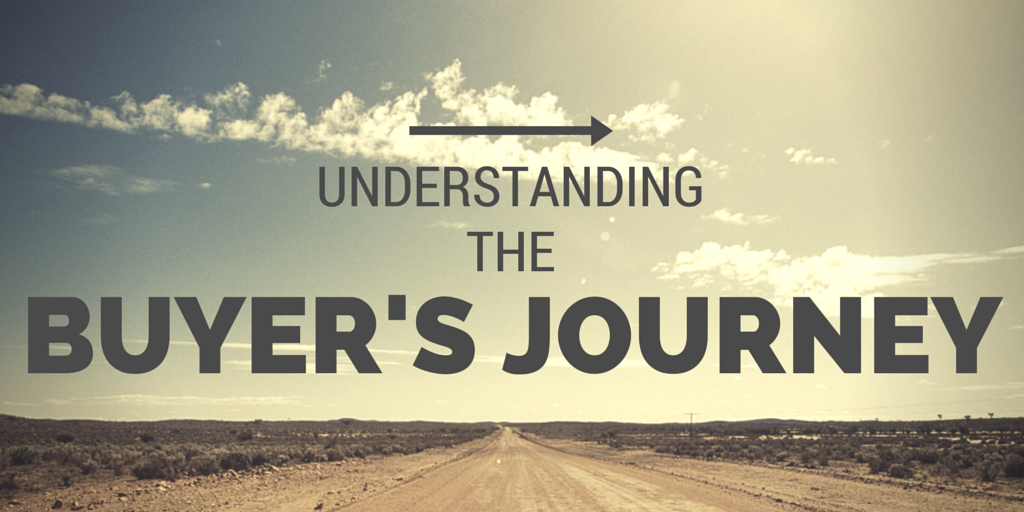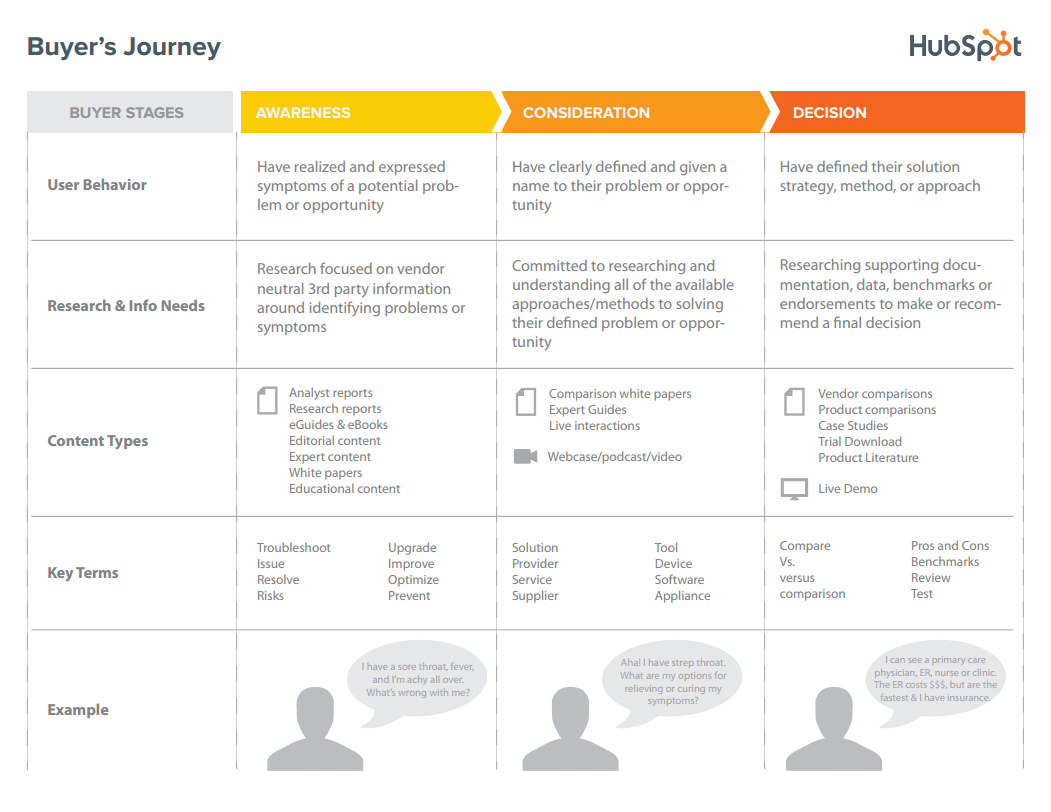Understanding the Buyers Journey

Before the age of the internet, the “Buyer’s Journey” was pretty predictable. A company would advertise a product with some information and tell the customer where to go to get it. If the customer was interested, she would go to the location specified and speak to a salesperson to get more information. The salesperson would give their song and dance and if she wanted the product, she would buy it. Done deal.
With Web 2.0 in full swing, buyers are exposed and searching numerous places to get information on whatever they want to purchase. I have worked with clients where their customers viewed on average, 30 to 130 pages on their site, before making a purchase decision. That doesn’t even include the possibility of competitor sites that may have been visited. This means that getting to your target market has become even more difficult because the Buyer’s Journey is not linear anymore and there is a lot of noise on the internet.
As a marketer, it’s important to know when and how to market to your target. So where do you start? If you’re on the Inbound Marketing boat, then you’ll definitely start with Buyer Personas target=”_blank”>. Once you’ve nailed down your personas, you should then move to understanding the Buyer’s Journey to create awesome content for each step in the journey. Combining your insight from your Buyer Personas and understanding the different stages of the Buyer’s Journey will give you a great “one-two punch” on creating epic content. HubSpot has a great one sheet that sums up the Buyer’s Journey. Click here to download it now and read on for more details.
Understanding the Buyer’s Journey
The Buyer’s Journey is broken down into three stages. They are Awareness, Consideration, and Decision stages. They do not follow a linear path and a customer could be at any stage at any given time. Remember that these stages are not how the customer perceives your brand. They are the stages of how a customer gets information toward making a decision. Getting a solid grasp on what the stages mean will steer your content marketing in the right direction.
AWARENESS STAGE
In the Awareness stage, the customer has just realized and expressed that there is a potential problem or opportunity. He’s not at the point where he wants to purchase a solution, he just knows that something isn’t right and needs to be addressed. He’s searching out information on the internet from neutral parties to educate himself.
POSSIBLE CONTENT TYPES
As you produce content for the Awareness stage, it’s a best practice to keep this content informational. How to’s, research reports, and expert content are some ideas. The bottom line is at this stage you want to build trust with the potential customer by sharing your knowledge of the topic. As you share your knowledge, the chances that you convey you are an authority on the topic will definitely go up.
CONSIDERATION STAGE
At the Consideration stage, the customer has clearly defined what the problem is and has given it a name. At this point she is committed to researching and getting a full understanding of all available approaches/methods to solving the problem. The customer will be searching out information from both neutral parties and some branded content.
POSSIBLE CONTENT TYPES
The content created for this stage of the Buyer’s Journey will be somewhat similar to content from the Awareness stage. While a customer is at the Consideration stage, it may be a good idea to create content offers. Content offers are things like e-books, whitepapers, or worksheet calculators. Since the customer is looking for solutions, create content that helps them along or will give them a solution to their problem.
DECISION STAGE
In the Decision stage, the customer has identified one or many solutions to his problem. Once the options to solve his problem are on the table, he will research all data, documentation, or endorsements to compare and contrast the solutions to his problem.
POSSIBLE CONTENT TYPES
The content that you produce at the Decision stage is where you can begin to share you brand with the customer. Case studies, trial downloads, live demos are all great content pieces that will help your customer make the final decision.
By understanding the Buyer’s Journey, this will help shape a strong inbound marketing strategy at create valuable content at every stage. The content that you develop should be epic and will help clear the noise and crappy content that is out there. By putting in the time to help your customer, you will ultimately sell more by sharing what you already know.


